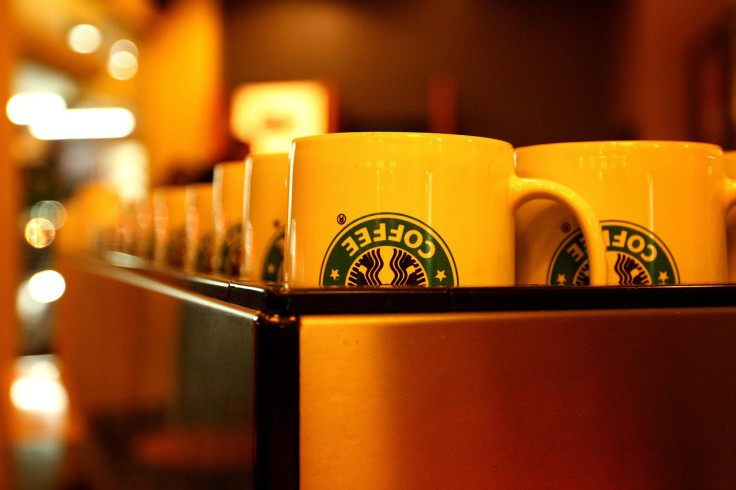'4 Minutes Or Less': Starbucks CEO Sets New Time Goal For Baristas To Take Order And Give Drink To Customers

In a bold move to revive its coffeehouse heritage and sharpen competitiveness, Starbucks CEO Brian Niccol has introduced the 'Green Apron Service', a new standard that pledges customers will receive their drinks in under four minutes—a change backed by smarter staffing, algorithm-driven queueing, and a $500 million operational reinvigoration.
The initiative, revealed during a recent earnings call and reinforced in internal communications, is part of a broader strategy to improve efficiency and customer satisfaction amid growing competition in the coffee sector.
'I've said to our team, part of our turnaround is becoming the world's greatest customer service company again,' Niccol said.
Why Speed Matters

The push for faster service comes as Starbucks faces mounting pressure from rivals such as Dunkin', Tim Hortons, and a growing number of independent coffee chains.
With mobile ordering, drive-thru demand, and customer expectations on the rise, the company is betting that speed will be a key differentiator.
According to data from Technomic, wait times at Starbucks are on the rise: In the second quarter, roughly 8% of customers waited 15 to 30 minutes for their drinks. That's a sharp contrast to 2019, when virtually no one experienced such long delays.
'We've learned, and now we know what we need to do, so let's scale it,' Niccol told Reuters at the company's leadership summit.
Niccol's new benchmark aims to minimise turnaround times, ease order congestion, and drive both higher throughput and improved customer satisfaction.
How Green Apron Service Speeds Up Your Coffee Time
Starbucks is scaling up this service model to all 11,000 US company-owned stores by summer 2025, following early tests that showed faster service and improved sales.
Piloted in over 1,500 stores, the Green Apron Service has already shown promising results. Starbucks reports improvements in transaction speed, customer satisfaction, and employee retention.
The Green Apron Service combines Smart Queue technology with driven staffing, including a dedicated drive-thru barista, to reduce wait times and restore the traditional in-store warmth.
This initiative is a key pillar of Niccol's 'Back to Starbucks ' turnaround strategy, which blends operational precision with customer centricity—reintroducing ceramic mugs, condiment bars, and handwritten messages on cups to make visits feel personal and intentional.
Why Four Minutes Matters Now
With competition from fast-growing rivals such as Dunkin', Tim Hortons, Dutch Bros and Luckin, Starbucks is betting that fast, friendly service will regain footfall. Recent data shows that without it, long wait times have become a turn-off for customers.
Baristas React
While some employees have welcomed the challenge, others have expressed concern over the added pressure. Baristas on Reddit and TikTok have expressed worries about burnout, particularly during peak hours when custom orders and understaffing are standard.
Grace, a Starbucks barista in Michigan, told VICE that drink orders have become increasingly complex over her two years with the company.
'The orders have gotten a lot crazier during the two years I've been with the company,' she said. She even polled her coworkers to see if they shared the same sentiment. 'I've asked my coworkers if they thought the orders were getting worse, and they were like, 'Oh my gosh, yes, 100 per cent.''
According to Grace, simple orders are now a rarity—and a welcome one. 'It's sporadic for someone to come in and order a regular latte or a black coffee. At our store, whenever someone does order something like that, all of us sigh with relief because it's not a drink with 17 customisations on it.'
Starbucks has pledged to invest in 'tools and time' and 'making Starbucks the best place to work with career opportunities and a clear growth path.'
For Niccol, building on the tradition of leadership through streamlined workflows and enhanced training will help stores meet the new goal.
A Global Rollout
The four-minute benchmark isn't limited to US locations. Starbucks plans to expand the initiative to international markets, including the UK, Canada, and Japan, with performance metrics and customer feedback guiding its global rollout. While not yet a universal standard, the company views this as a critical step toward operational excellence worldwide.
Industry analysts say the move reflects a broader trend in fast-casual dining, where speed and convenience increasingly drive consumer loyalty. However, they caution that service quality must not be sacrificed in the pursuit of speed.
Balancing Speed with Experience
Starbucks has long positioned itself as a 'third place', a space between home and work where customers can relax. Critics argue that an aggressive time target may undermine that ethos.
Still, Niccol insists the goal is about consistency, not haste: 'This isn't just a new way of working—it's a return to what makes Starbucks special: human connection.
'With innovative tools like Smart Queue and a renewed focus on people, we're reimagining the Starbucks Experience for everyone—one cup, one connection, one coffeehouse at a time.'
As Starbucks enters its next chapter, the four-minute rule may become a defining feature of its brand, one that blends efficiency with hospitality in a fast-paced world.
© Copyright IBTimes 2025. All rights reserved.





















